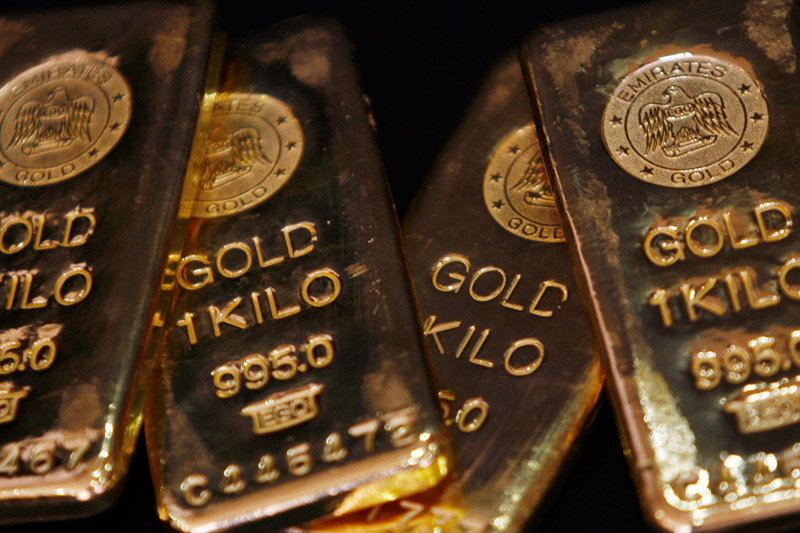By Nat Rudarakanchana - Sentiment towards gold has picked up modestly in January, as the precious yellow metal closed just above $1,250 per ounce on Friday, a psychologically key threshold, amid other encouraging signals.
“A modest build in speculative positioning, an increase in ETP holdings, and a strong start to coin sales implies investor appetite may be less of a drag on prices and in turn is a key area to watch,” wrote Barclays PLC (LON:BARC) analysts in a note on Monday.
Most notably:
- Those betting on gold on New York’s Comex exchange rose to their highest since early November, as net longs rose for the fourth straight week, on the latest data running to Jan. 14. “This was the largest weekly build in fresh longs since mid-October, supported by the weaker-than-expected non-farm payrolls data,” wrote Barclays analysts. That’s as measured by U.S. Commodity Futures Trading Commission data.
- In the first half of January, gold coin sales reached 11 percent of all coins sold in 2013, at 123 kilo ounces. “In absolute terms, if sales remain at this pace, January 2014 will prove to be the strongest January since 1999,” according to Barclays. Coin sales in the new year have remained robust, especially in Australia and Canada.
January is traditionally a strong month for coin sales, however, as collectors hoard new coin designs.
- Gold exchange-traded products (ETPs) saw their first net inflows in almost a month, and the largest daily intake since Jan. 31, 2013. These investment products allow investors easy exposure to gold prices without the need to buy physical bullion. Gold tonnage pouring into these stock-like products is often a proxy for investor sentiment.
In 2013, such outflows were the worst on record for about a decade, led by outflows from the world’s largest gold ETF, SPDR GLD. Collectively such funds lost over 870 metric tons of gold in 2013, an overwhelming amount relative to Friday’s intake of 7.4 tons.
“However, flows for the month to date are still negative at 16 tonnes (metric tons), but signs of stabilization will be key in allowing gold prices to find better support,” said Barclays.
Modest positive signals for gold in early 2014 could also be driven by index rebalancing and hedge fund buying. Many investors and analysts still believe that gold won’t do well in 2014, as a U.S. economic recovery appears on steady legs and as Indian import rules depress global demand. That follows gold’s steep price decline in 2013, its worst percentage fall since 1981.
Gold could also have risen much higher on seriously weak U.S. jobs data from Jan. 10, wrote UBS AG (VTX:UBSN) analysts on Friday.
“With just a $12 range in gold for the week, many participants will leave their desks today wholly disillusioned with gold’s price path. It shrugged off the olive branch received from last Friday’s NFP [non-farm payrolls data], and also ruled out any price flutter above $1250 that initially looked like a possibility,” they wrote on Jan. 17.
“The gold market is lacking enthusiasm and interest…Collective sentiment is firmly back in the bearish camp.” Even Barclays analysts are skeptical, too, of steeply higher gold prices. They forecast that gold will average $1205 per ounce over 2014.
